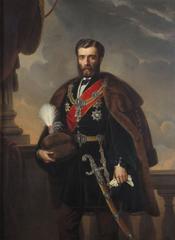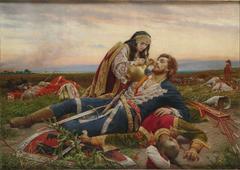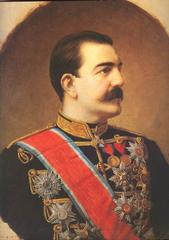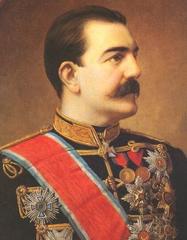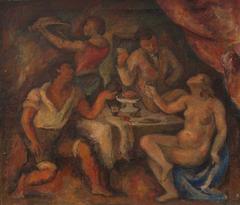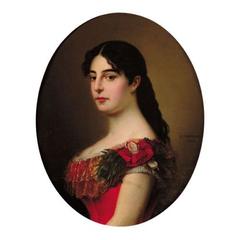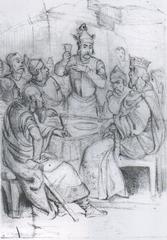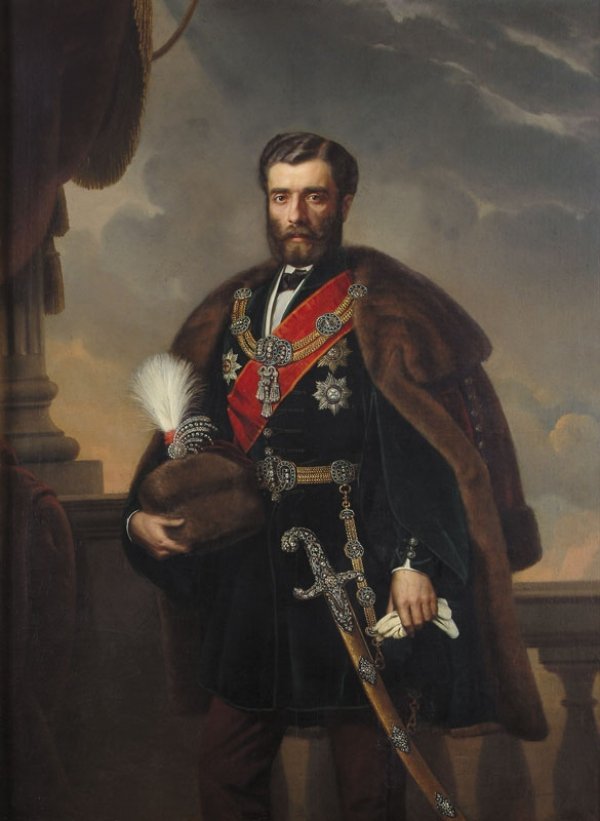
Belgrade City Museum: Visiting Hours, Tickets, and Historical Sites Guide
Date: 14/06/2025
Introduction: Discovering the Heart of Belgrade’s Heritage
The Belgrade City Museum is a vital institution preserving the cultural and historical essence of Serbia’s capital. Founded in 1903, it has grown from a modest municipal collection into an expansive network of museums and historic sites, safeguarding over 157,000 artifacts that narrate the story of Belgrade from prehistoric times to the present. Its branches—ranging from archaeological sites to memorial homes of renowned Serbian figures—offer a multifaceted window into the city’s evolution, diversity, and resilience. Whether you are a history enthusiast, art lover, or cultural traveler, this guide provides comprehensive information on visiting hours, tickets, major collections, future developments, and essential travel tips to ensure an enriching museum experience (trek.zone, Google Arts & Culture, arheo.rs).
Contents
- Introduction
- Origins and Development
- Expansion of Collections
- Architectural and Institutional Growth
- Visitor Information (Hours, Tickets, Accessibility)
- Collection Highlights
- Integration with Belgrade’s Urban Life
- Museum Collections
- Archaeological Holdings
- Fine Art Collection
- Historical and Ethnographic Collections
- Contemporary Art and Temporary Exhibitions
- Affiliated Sites and Branches
- Practical Visitor Tips
- Historical Evolution of Museum Buildings
- Future Developments: New Central Museum
- Frequently Asked Questions (FAQ)
- Visuals and Multimedia Suggestions
- Internal Links for Further Exploration
- Call to Action
- Summary and Visitor Tips
- References
Origins and Development
Founded in 1903 during a period of significant urban transformation, the Belgrade City Museum began as the Municipal Museum and Library. Its initial focus was on recent history but soon expanded to encompass prehistoric, medieval, Ottoman, and Austro-Hungarian periods, mirroring the city’s layered past (trek.zone).
Expansion of Collections
Today, the museum’s holdings comprise tens of thousands of objects, including archaeological artifacts, medieval manuscripts, historical maps, photographs, personal memorabilia of significant citizens, and works by both Serbian and international artists. The thematic curation of exhibits allows visitors to trace Belgrade’s urban and cultural evolution across centuries (mexicohistorico.com, trek.zone).
Architectural and Institutional Growth
The museum operates from a network of historic buildings. Notably, the Konak of Princess Ljubica, a prime example of Balkan architecture, has long been associated with the museum. Administrative functions are based at 1 Zmaj Jovina Street. The institution also manages an array of specialized branches, each focusing on different aspects of Belgrade’s heritage (mexicohistorico.com, trek.zone).
Visitor Information: Hours, Tickets, and Accessibility
- Visiting Hours: Most sites are open Tuesday–Sunday, 10:00 AM–6:00 PM; closed Mondays and major holidays.
- Tickets: Standard admission is around 300 RSD (~€2.50, 2025), with discounts for students, seniors, and groups. Tickets are available at entrances and online.
- Accessibility: Many branches are wheelchair accessible, and guided tours are available in Serbian, English, and other languages.
- Guided Tours & Events: Daily tours, workshops, and temporary exhibitions are offered. Check the official website for schedules.
Collection Highlights
- Archaeological Artifacts: Tools, pottery, and jewelry from Neolithic Vinča settlements.
- Medieval Manuscripts & Weaponry: Reflecting Belgrade’s strategic importance.
- Ottoman-Era Objects: Illustrating the city’s frontier role.
- Historic Maps & Models: Rare cartographic materials from the 18th and 19th centuries.
- Personal Artifacts: Belongings of Serbia’s cultural and political figures.
- Fine Art: Works by Serbian masters and renowned international artists (mexicohistorico.com).
Integration with Belgrade’s Urban Life
The museum’s central locations allow easy access to other cultural sites including the National Museum, Kalemegdan Fortress, Knez Mihailova Street, and Tašmajdan Park, making it ideal for integrated cultural itineraries (trek.zone).
Museum Collections
Archaeological Holdings
Artifacts from the Paleolithic to Middle Ages, notably from the Vinča-Belo Brdo site—one of Europe’s oldest settlements—illustrate early metallurgy, ceramics, and proto-writing (Belgrade City Museum – TOB, Wikipedia).
Fine Art Collection
A rich selection of works by Serbian painters such as Paja Jovanović, Sava Šumanović, and Nadežda Petrović, alongside international artists like Dürer and Corot, trace the evolution of Serbian art and its global influences (Wikipedia).
Historical and Ethnographic Collections
Engravings, maps, documents, and ethnographic objects chart Belgrade’s transformation across empires, highlighting urban growth and diverse lifestyles (TOB).
Contemporary Art and Temporary Exhibitions
The Salon at 30 Bulevar kralja Aleksandra showcases post-1950 Serbian art and hosts rotating exhibitions, keeping the museum’s programming current (Wikipedia, Belgrade Beat).
Affiliated Sites and Branches
- Princess Ljubica’s Residence: A preserved 19th-century noble home (TOB).
- Ivo Andrić Museum: Nobel laureate’s former apartment (Wikipedia).
- Paja Jovanović Museum: Painter’s studio and memorabilia (TOB).
- Jovan Cvijić Museum: Geographer’s home and scientific legacy (Wikipedia).
- Banjica Concentration Camp Museum: WWII memorial (Belgrade Beat).
- Sekulić Icon Collection: Orthodox Christian icons (TOB).
- Vinča-Belo Brdo: Prehistoric archaeological site (Belgrade Beat).
- Zemun Museum: Local history from the Austro-Hungarian period (Wikipedia).
Practical Visitor Tips
- Plan Visits: Check which site hosts your preferred exhibition via the official website.
- Combined Tickets: Sometimes available for multiple sites; inquire at ticket offices.
- Belgrade Card: Offers free or discounted entry (belgradecard.rs).
- Accessibility: Varies by site; contact ahead for details.
- Language: Most exhibitions in Serbian; some English translations and tours available.
Historical Evolution of Museum Buildings
Early Foundations
Originally located in the Konak of Princess Ljubica, the museum demonstrated early commitment to heritage preservation (arheo.rs). The current administrative center is at 1 Zmaj Jovina Street.
Expansion and Multi-Site Operations
As collections grew, the museum expanded into over 40 buildings, each with a specialized focus. This decentralized model allows thematic depth but can challenge unified visitor experiences.
Towards a Centralized, Modern Facility
The absence of a modern, unified exhibition space has prompted plans for a new building in Belgrade’s emerging museum quarter. This will allow full integration of the museum’s collections and state-of-the-art visitor amenities (muzejnikoletesle-konkurs.rs).
Future Developments: The New Belgrade City Museum
The upcoming museum quarter, centered at the intersection of Resavska and Nemanjina Streets, will feature modern facilities, conservation labs, educational centers, and public spaces. It will unify the museum’s vast collections and is designed to be fully accessible, serving as a cultural landmark for Belgrade and Southeast Europe (muzejnikoletesle-konkurs.rs).
Frequently Asked Questions (FAQ)
-
What are the museum’s opening hours?
Most sites: Tuesday–Sunday, 10:00 AM–6:00 PM; closed Mondays. -
How much are tickets?
Standard: 300 RSD (~€2.50); discounts for students, seniors, groups. -
Where can I buy tickets?
On-site or online via the official website. -
Are sites accessible?
Accessibility varies; the new museum will be fully accessible. -
Are guided tours available?
Yes, in Serbian and English at select sites. -
Can I take photos?
Policies differ by site; inquire locally.
Visuals and Multimedia
Explore virtual tours, high-quality images, and videos via the museum’s website and social media. Include descriptive alt text for SEO, e.g., “Vinča-Belo Brdo archaeological artifacts at Belgrade City Museum,” “Princess Ljubica’s Residence museum exterior,” and “Paja Jovanović’s paintings in Belgrade City Museum collection.”
Internal Links for Further Exploration
Call to Action
Plan your visit today!
Check the latest visiting hours and ticket information on the Belgrade City Museum’s official website, and consider the Belgrade Card for added convenience. Stay connected through the museum’s social media channels and download the Audiala app for audio guides and exclusive cultural content.
Summary and Visitor Tips
The Belgrade City Museum is an indispensable destination for anyone seeking to understand the city’s historical and cultural evolution. By exploring its distributed network of sites—from ancient archaeological digs to the personal worlds of literary and artistic legends—you gain a comprehensive view of Belgrade’s diverse heritage. As the museum prepares for a transformative new era with its forthcoming centralized building, visitors are encouraged to consult official sources for up-to-date information and leverage digital resources for an enriched experience. The museum is not just a repository of the past; it is an active participant in Belgrade’s vibrant cultural present and future (muzejnikoletesle-konkurs.rs, Belgrade Beat, arheo.rs).
References
- trek.zone
- Google Arts & Culture
- mexicohistorico.com
- arheo.rs
- muzejnikoletesle-konkurs.rs
- Belgrade Beat
